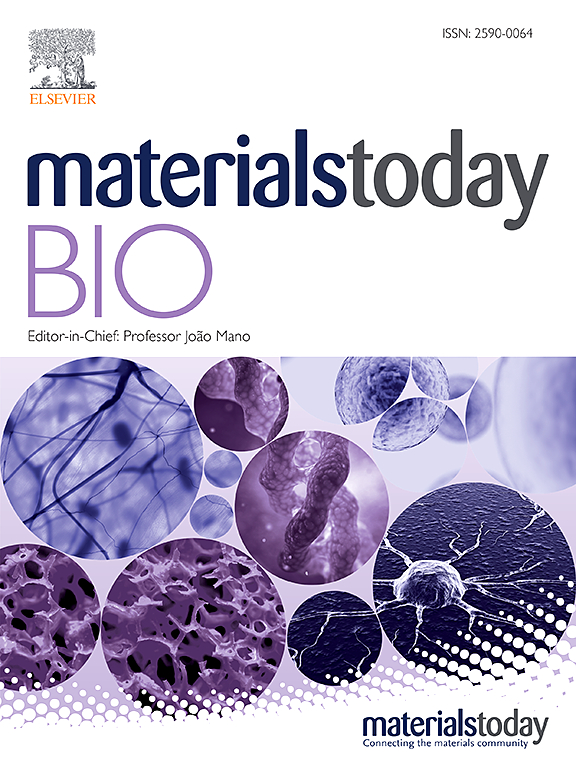Cyclooxygenase-2/prostaglandin E2 inhibition remodulated photodynamic therapy-associated immunosuppression for enhanced cancer immunotherapy
IF 8.7
1区 医学
Q1 ENGINEERING, BIOMEDICAL
引用次数: 0
Abstract
Low immunogenicity and immunosuppressive tumor microenvironment (TME) are two pivotal factors restricting tumor immunotherapy. Photodynamic therapy (PDT) directly destroys cancer cells by producing reactive oxygen species (ROS), and enhances the immunogenicity of "cold" tumors by inducing immunogenic cell death (ICD), thereby promoting T cell development against tumors. However, PDT also deteriorates immunosuppression through overactivating the cyclooxygenase-2/prostaglandin E2 (COX-2/PGE2) pathway. To this end, biocompatible albumin nanoassemblies co-delivering IR780 and diclofenac are herein developed for enhanced therapy against triple-negative breast cancer. PDT-exacerbated PGE2 overexpression is effectively abolished by diclofenac-mediated COX-2 inhibition, which reprograms immunosuppressive TME via downregulating the infiltration of various immunosuppressive cells and their cytokine secretion to enhance effector T cell infiltration. Consequently, the enhanced antitumor immunity effectively inhibits tumor growth, prevents the recurrency and metastasis, and remarkably boosts the treatment efficacy of PD-L1 blockade. This study sets an intriguing example for overcoming the COX-2/PGE2 pathway-exacerbated immunosuppression alongside immune activation, thus enhancing synergistic cancer immunotherapy potentiated by various ROS-producing therapies (e.g., PDT and radiotherapy) and chemotherapy.

求助全文
约1分钟内获得全文
求助全文
来源期刊

Materials Today Bio
Multiple-
CiteScore
8.30
自引率
4.90%
发文量
303
审稿时长
30 days
期刊介绍:
Materials Today Bio is a multidisciplinary journal that specializes in the intersection between biology and materials science, chemistry, physics, engineering, and medicine. It covers various aspects such as the design and assembly of new structures, their interaction with biological systems, functionalization, bioimaging, therapies, and diagnostics in healthcare. The journal aims to showcase the most significant advancements and discoveries in this field. As part of the Materials Today family, Materials Today Bio provides rigorous peer review, quick decision-making, and high visibility for authors. It is indexed in Scopus, PubMed Central, Emerging Sources, Citation Index (ESCI), and Directory of Open Access Journals (DOAJ).
 求助内容:
求助内容: 应助结果提醒方式:
应助结果提醒方式:


